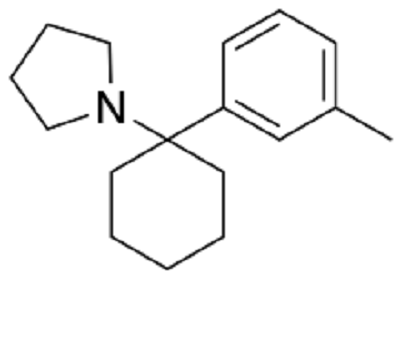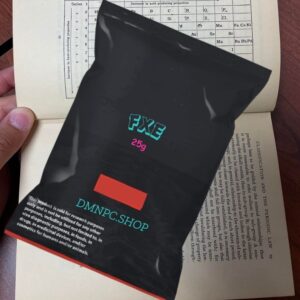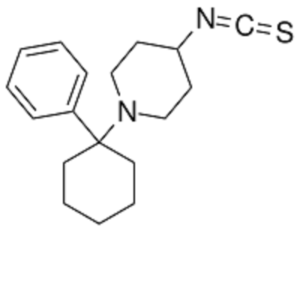3-Me-PCPy (3-Methylphencyclopyridine) is a synthetic compound in the arylcyclohexylamine class, a group of substances known for their dissociative anesthetic properties. It is structurally similar to phencyclidine (PCP) and other related compounds, such as 3-MeO-PCP and 3-MeO-PCPy, but with a methyl (-CH₃) group substitution at the 3rd position of the aromatic ring and a pyridine ring in place of the phenyl ring found in PCP.
Key Characteristics of 3-Me-PCPy:
- Chemical Structure:
- The compound is a methylated analog of PCPy (phencyclopyridine), with the methyl group enhancing or altering its pharmacological properties.
- The substitution of the phenyl ring with a pyridine ring may affect its receptor-binding profile and potency.
- Mechanism of Action:
- 3-Me-PCPy is believed to function as an NMDA receptor antagonist, similar to other arylcyclohexylamines. This action blocks the NMDA receptors, disrupting glutamate signaling in the brain and producing dissociative effects such as detachment from reality and altered perception.
- It may also interact with other receptor systems, such as dopamine and sigma receptors, contributing to potential stimulant or euphoric effects.
- Psychoactive Effects:
- While there is limited specific information on 3-Me-PCPy, its effects are presumed to be similar to related compounds, including:
- Dissociation: A sense of detachment from one’s body or surroundings.
- Euphoria: Mood elevation and a sense of well-being.
- Stimulation: Increased energy and alertness at lower doses.
- Perceptual Changes: Altered sensory experiences, such as visual and auditory distortions.
- The effects depend on dosage, individual tolerance, and the method of administration.
- While there is limited specific information on 3-Me-PCPy, its effects are presumed to be similar to related compounds, including:
- Duration and Potency:
- Anecdotal reports suggest that the duration and potency may be comparable to other arylcyclohexylamines like PCP or 3-MeO-PCP, but specific pharmacokinetic data is not well-established.
- Research Chemical:
- 3-Me-PCPy is classified as a research chemical with no approved medical or therapeutic uses. It is primarily studied in laboratory settings to investigate its pharmacology.
Risks and Concerns:
- Limited Research:
- There is minimal scientific literature on 3-Me-PCPy, so its full effects, safety profile, and long-term risks remain unknown.
- Potential for Abuse:
- Like other dissociatives, 3-Me-PCPy may carry a risk of psychological dependence due to its dissociative and euphoric effects.
- Adverse Effects:
- Possible negative effects may include:
- Cognitive Impairment: Confusion, memory issues, or difficulty concentrating.
- Physical Effects: Nausea, motor impairment, or increased heart rate.
- Psychological Risks: Anxiety, paranoia, or psychosis at higher doses.
- Bladder Toxicity: Prolonged or heavy use of arylcyclohexylamines has been associated with bladder damage.
- Possible negative effects may include:
- Overdose Risks:
- High doses can lead to extreme dissociation, delirium, or unconsciousness, posing significant risks.
Legal Status:
- The legal status of 3-Me-PCPy varies by country.
- In some jurisdictions, it may be classified as a controlled substance under laws regulating PCP analogs or psychoactive chemicals.
- In others, it may remain unregulated but is often subject to restrictions due to its potential for misuse.
Disclaimer:
3-Me-PCPy is a potent experimental compound with significant risks. It should only be handled in compliance with local laws and regulations and in controlled, scientific environments. Recreational use is strongly discouraged due to potential physical, psychological, and legal consequences. Always prioritize safety and harm reduction when studying or handling such substances.





Reviews
There are no reviews yet.